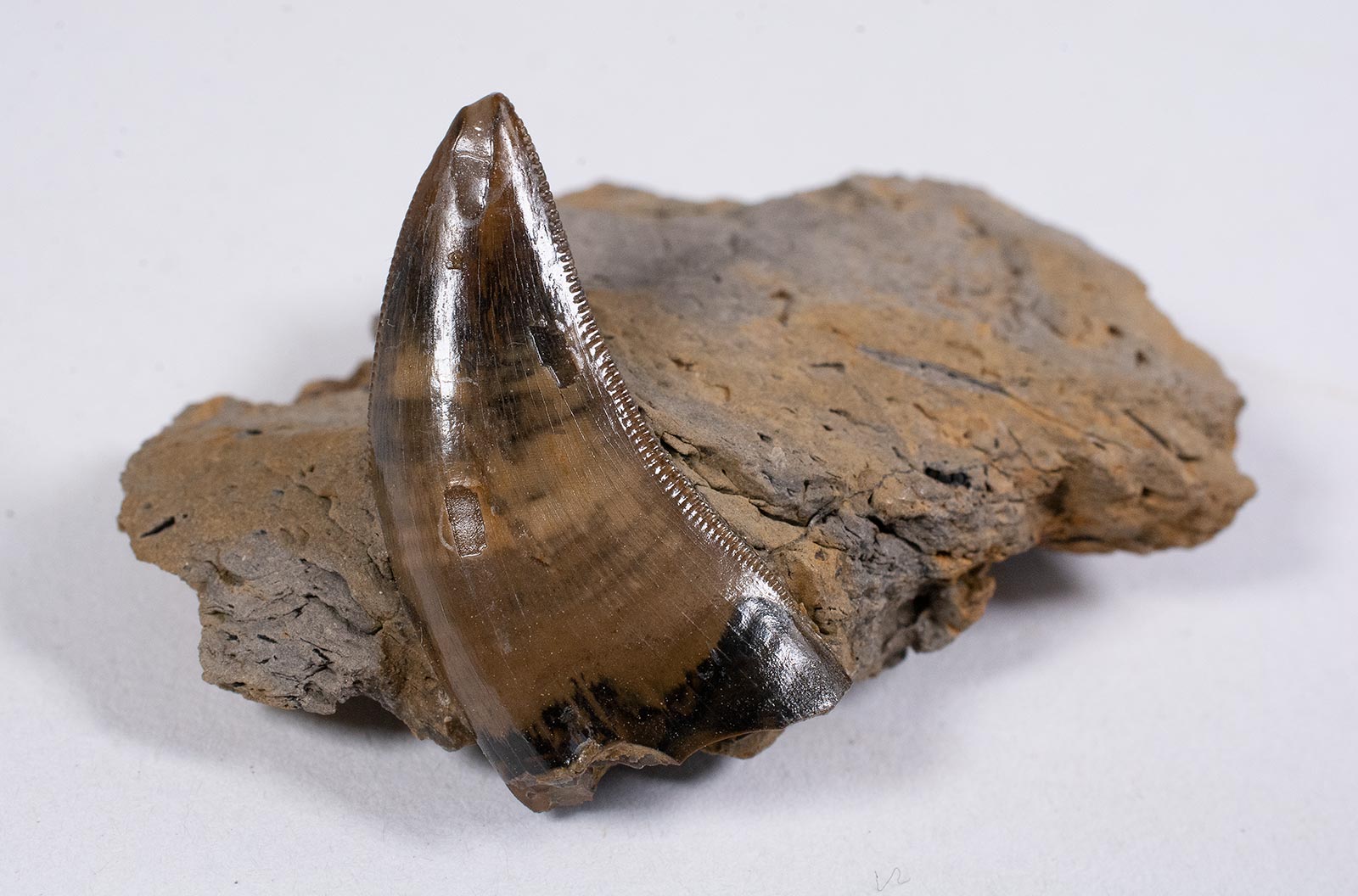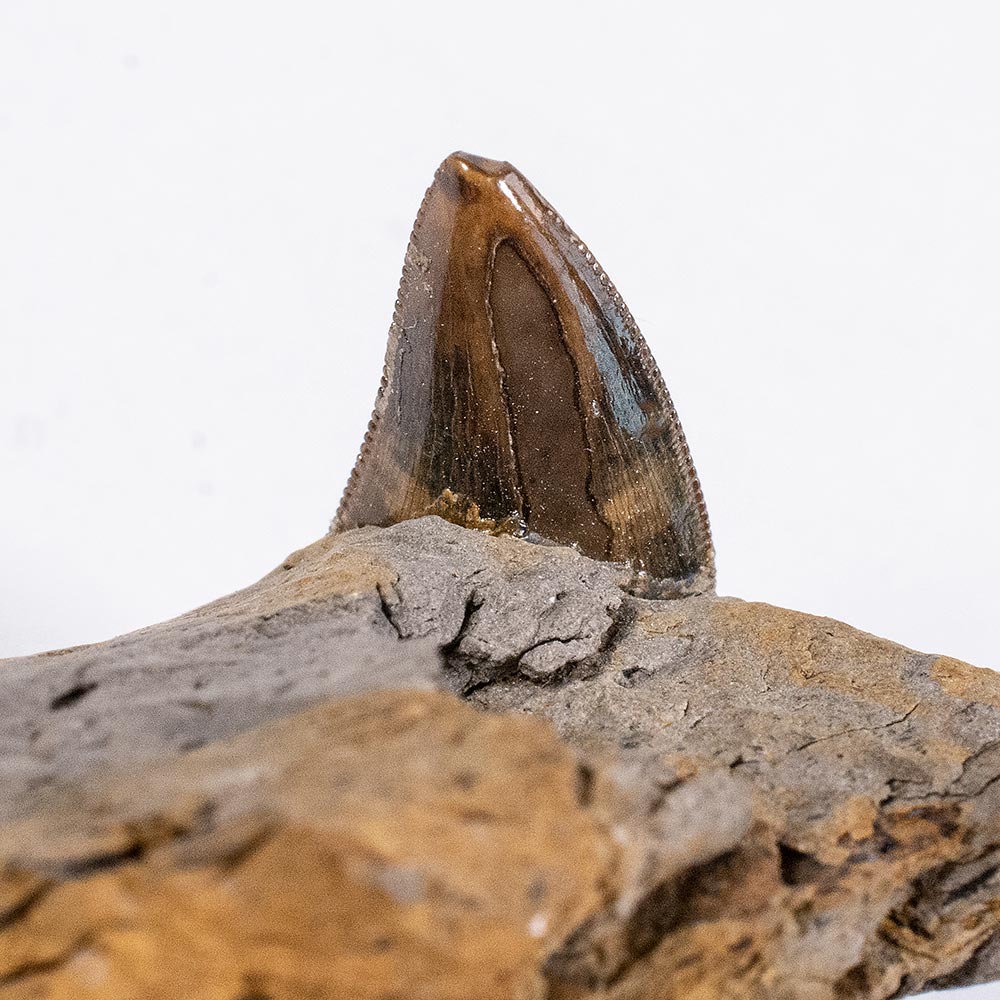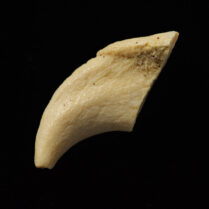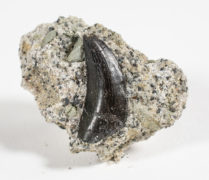Description
Nanotyrannus lancensis
Late Cretaceous
Hell Creek Formation
Harding County, South Dakota, USA
24mm theropod tooth on 47mm matrix
Nanotyrannus is a controversial and debated genus of tyrannosaurid theropod dinosaur that lived during the Late Cretaceous period, around 67 to 66 million years ago. The debate surrounding Nanotyrannus primarily revolves around whether it is a distinct species or simply a juvenile form of Tyrannosaurus rex.
The first fossil attributed to Nanotyrannus was discovered in 1942 and originally described as a new species of Gorgosaurus. It was later reclassified as a new genus, Nanotyrannus, in 1988. The most well-known specimen is “Jane,” a nearly complete skeleton discovered in Montana in 2001. Nanotyrannus was smaller than T. rex, with an estimated length of about 17 to 20 feet (5 to 6 meters). This smaller size is one of the primary reasons some paleontologists have argued it could be a distinct species.
The main controversy surrounding Nanotyrannus is whether it represents a distinct species or is simply a juvenile T. rex. Proponents of the latter view argue that the differences in skull morphology and other features between Nanotyrannus and T. rex specimens can be attributed to the growth stages of T. rex rather than to a separate species. Advocates for Nanotyrannus being a separate species point to differences such as a more gracile (slender) build, more teeth, and a different skull shape compared to known adult T. rex specimens. While the debate is ongoing, the prevailing view among many paleontologists is that Nanotyrannus is likely a juvenile T. rex. However, until more definitive evidence is found, the question remains open.






